Theo Verelst Local Diary Page 61
I've ditched the usual header for the
moment, I think it doesn't help much anyhow.
This page is copyrighted by me, and may be read and transfered by any
means only as a whole and including the references to me. I
guess thats normal, the writer can chose that of course, maybe
I´ll make some creative commons stuff one day, of course I have
made Free and Open Source software and even hardware designs available!
This
page is under contruction, so check back later, too.
Fri Dec 12 17:06, 2008
Dennis chambers!
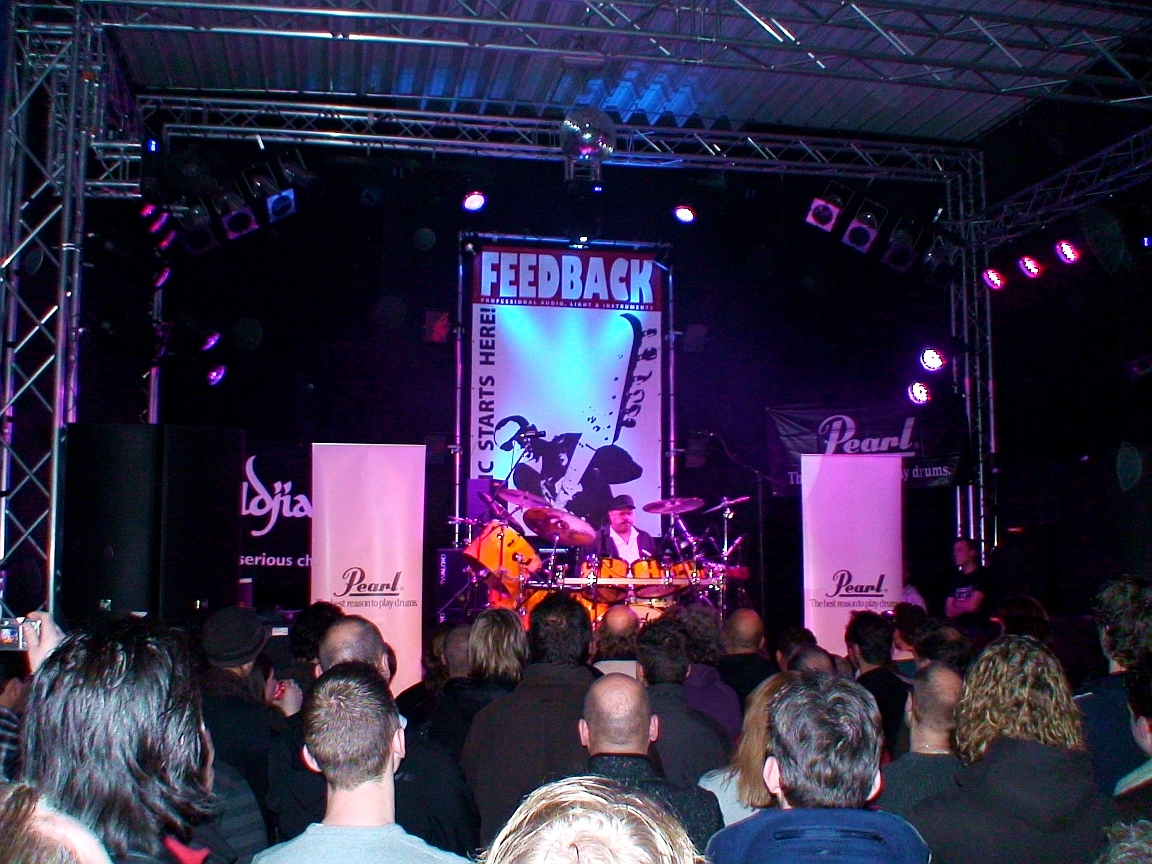
Theover.org into Cuda
Heavy processing in graphics cards. I was able to put in a GF9500 in a
still reasonably fast machine, and compile the cuda examples (after
installing the drivers and libraries) on Linux (Fedora 8/64), and view
them on the big HD screen:
Screenshots:
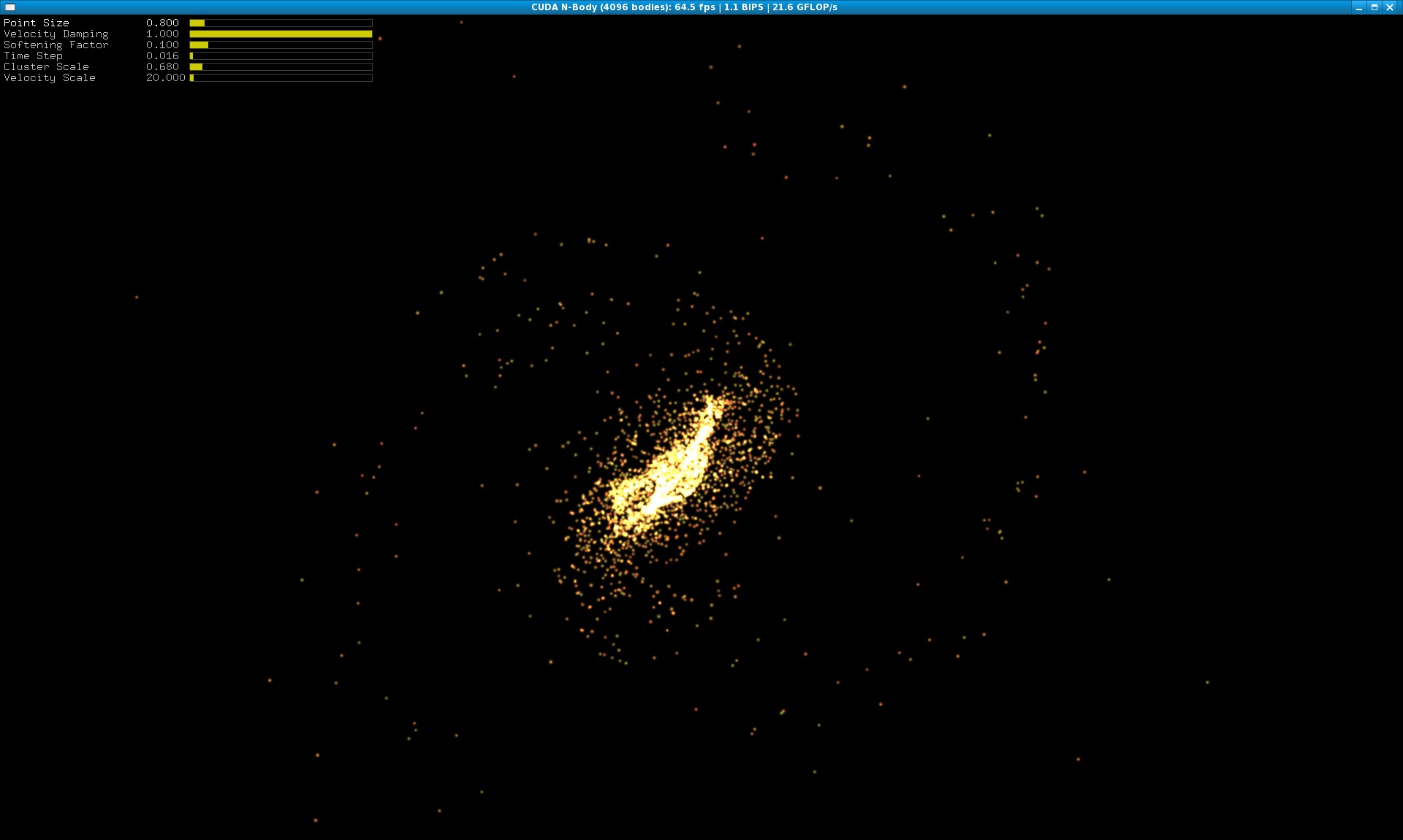
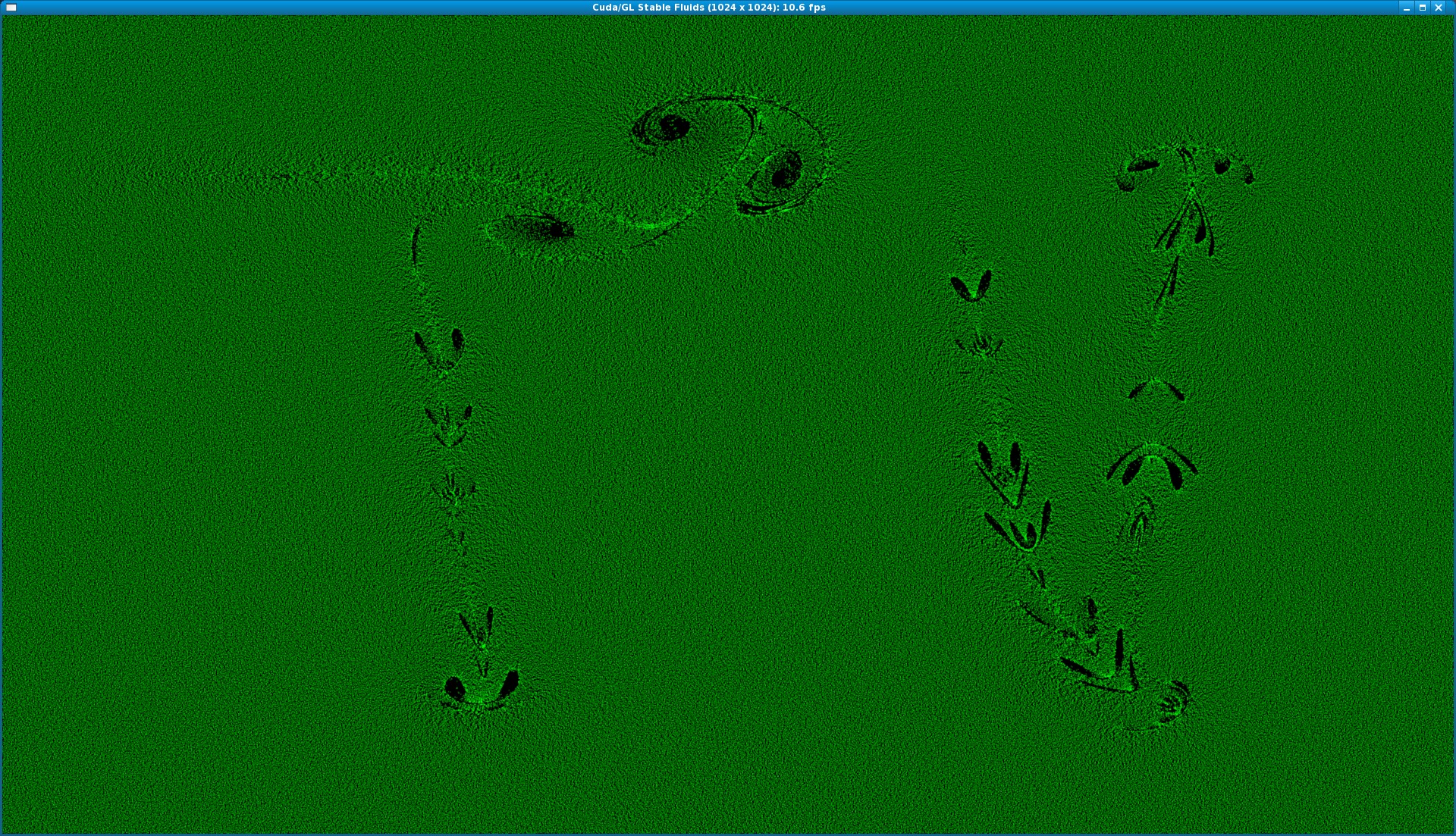
This is a picture from me from my homepage being abused to act as a
proijected texture in a Cg shader example application, also running on
the same system:
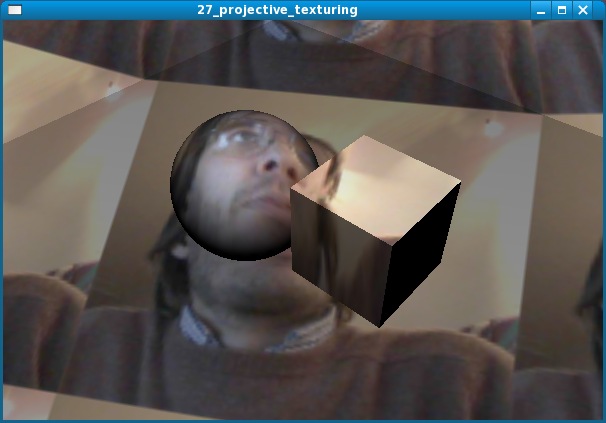
I didn´t make a movie of this, but the light and the projected
picture move in the animation, an effect like a unusual disco ball.
A more serious looking application, GLC with a tie fighter model to
view:
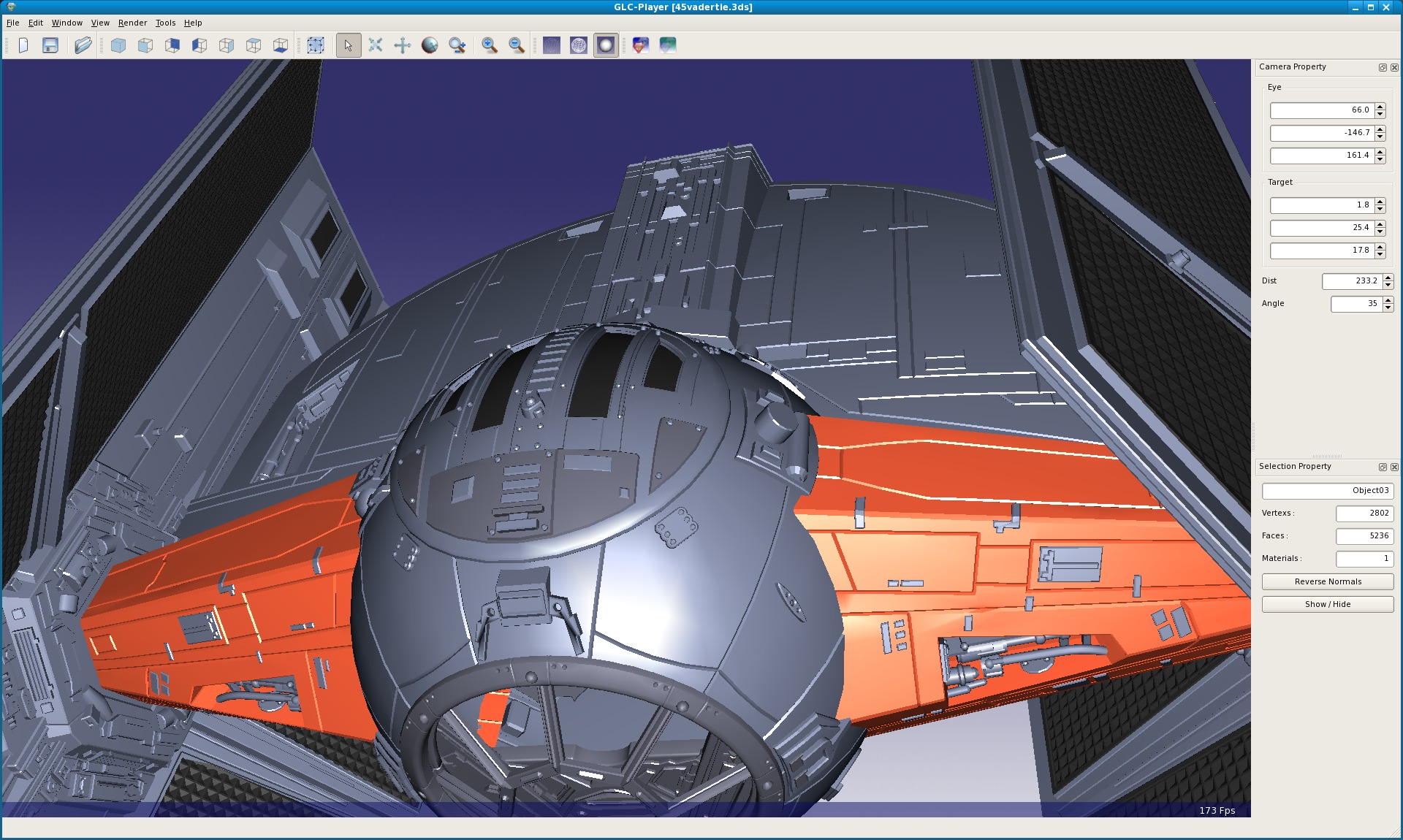
It seems I could plan Gelato renderings and paths for animations by
adapting this application, but this one was the precompiled version,
though I have the sources.
Another shading app:
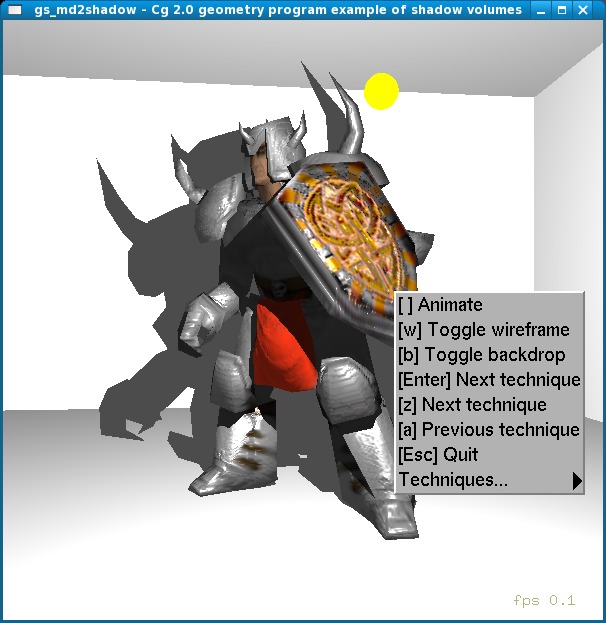
And more heavy cuda:
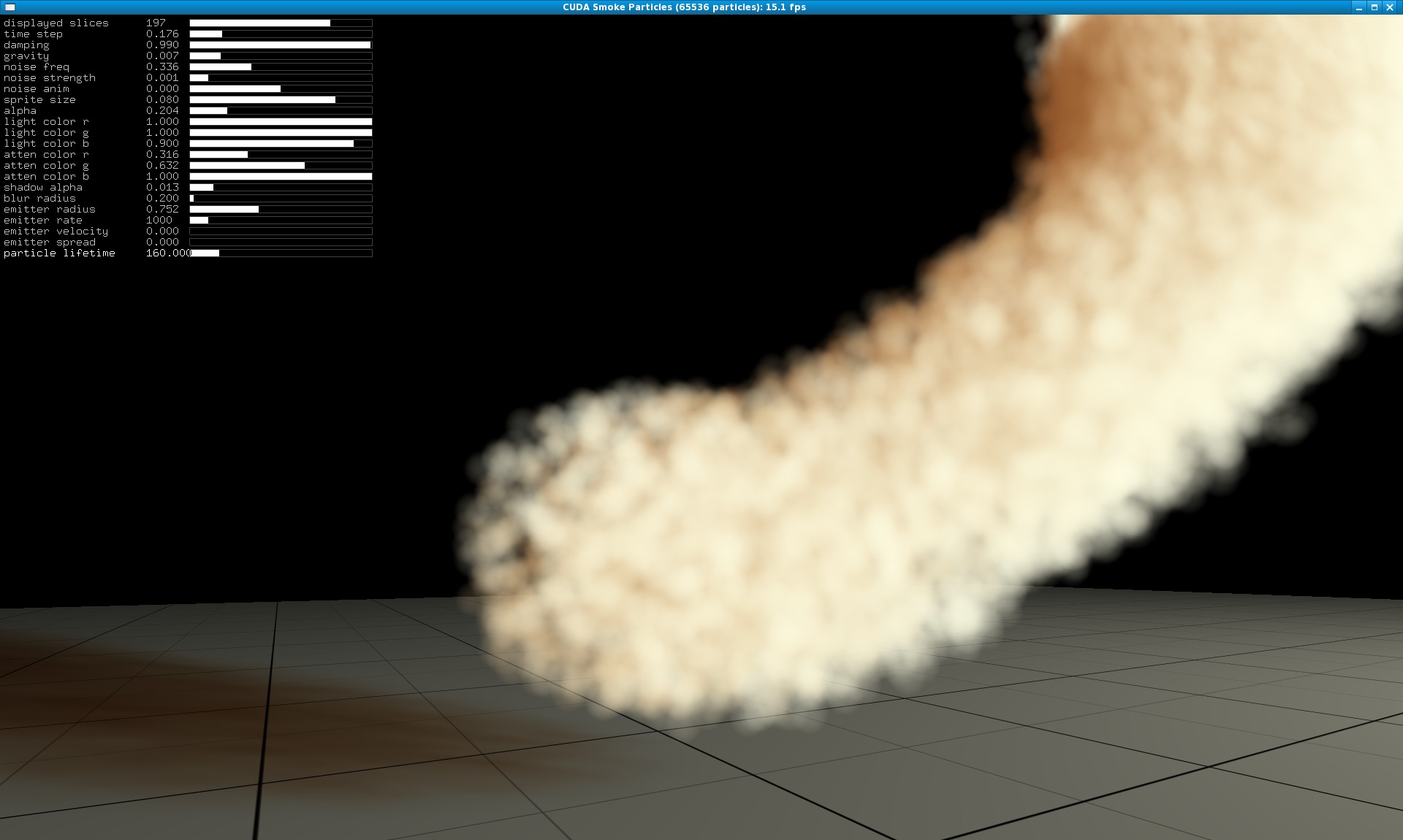
Those are real-time smoke particels, translucent, moving and acting as
smoke, with shadow and camera motion. In fact it is possible to run a
cuda application and a shader application at the same time, that makes
the graphics chip really work, I just didn´t try in on
application.
Another Cuda example which I modified (I compiled all the above myself)
to write frames from, it the partices example:
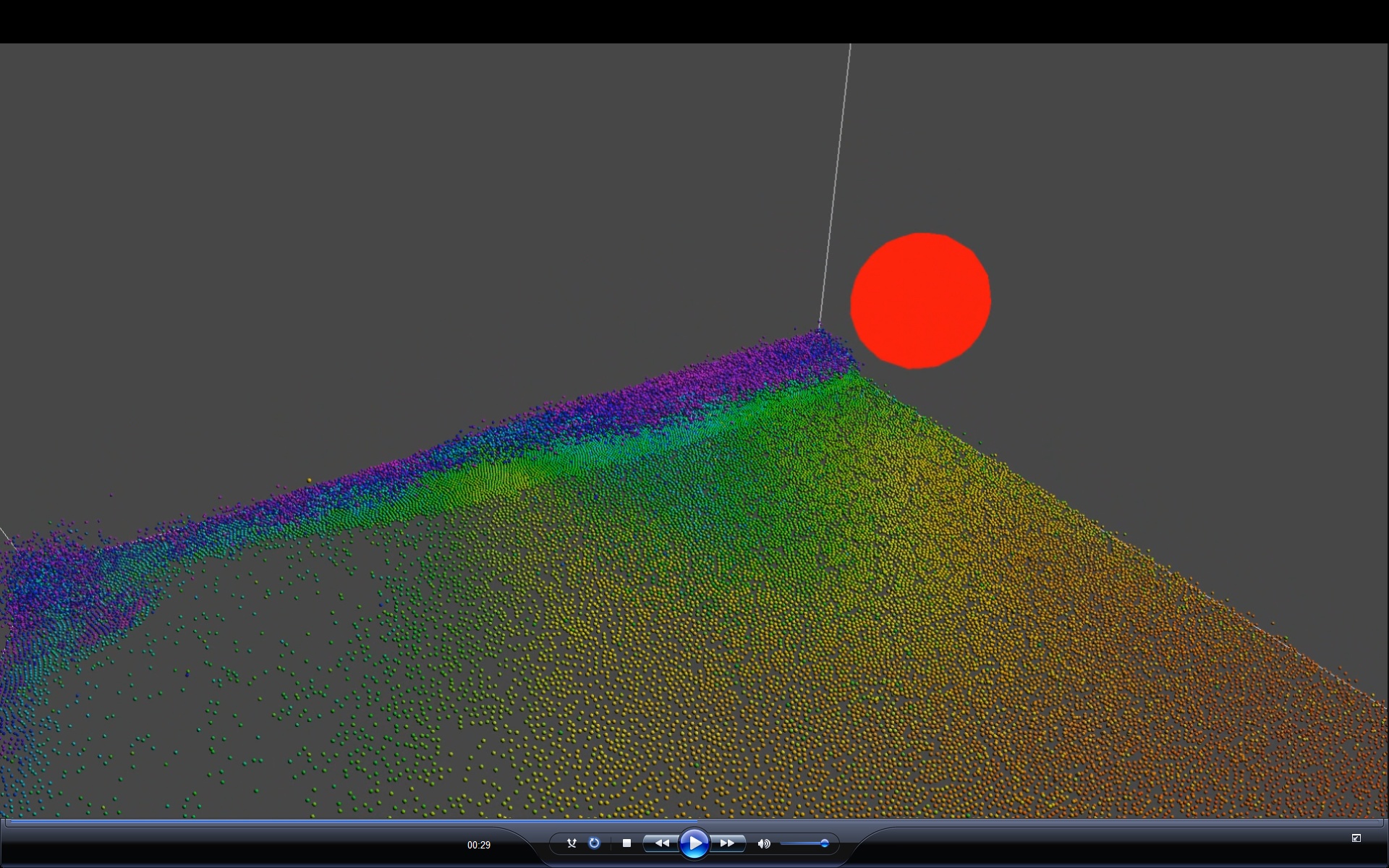
That accuray is actually in the VBR mpeg movie, it´s a random
unprocessed frame. A much less quality (and much smaller) mp4 film of a
minute is here. I´ve put
some links up here
on the NVidia Cuda for Linux forum. A maybe easier flash inpression is
on vimeo where I´ve
made the high quality (albeith 720p) movie available for download.
Maybe Cuda can run Connection Machine LISP:
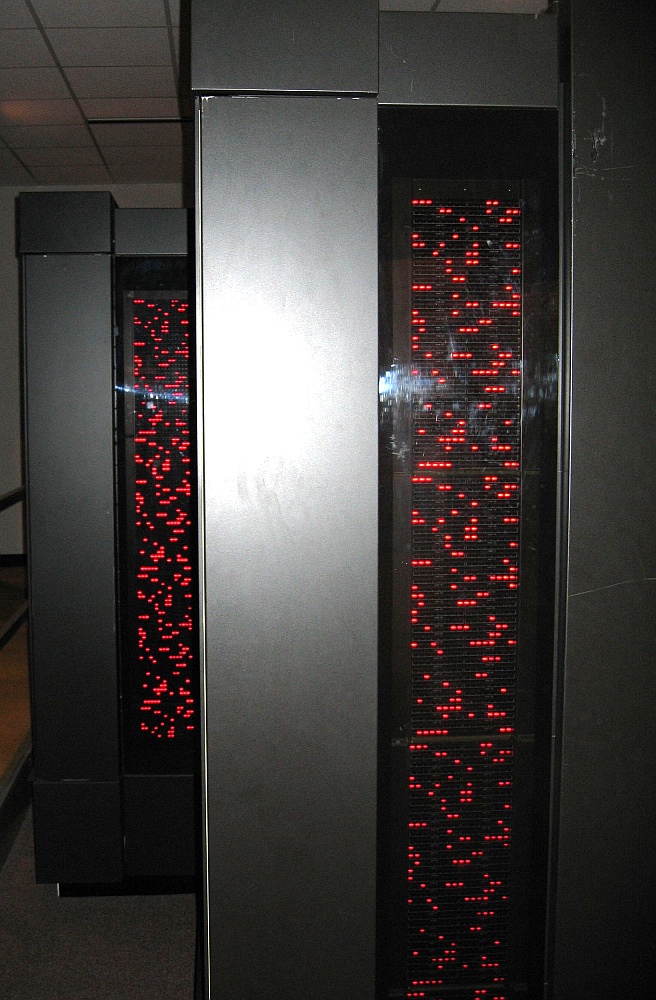
Graphics card replacing
Ignoring a fan breaking down for a long year is not a good idea, and
although I kept a constant watch on temperature and think it never went
where I though it would be critical according to some number in a
dialog box, I think a graphics card broke down.
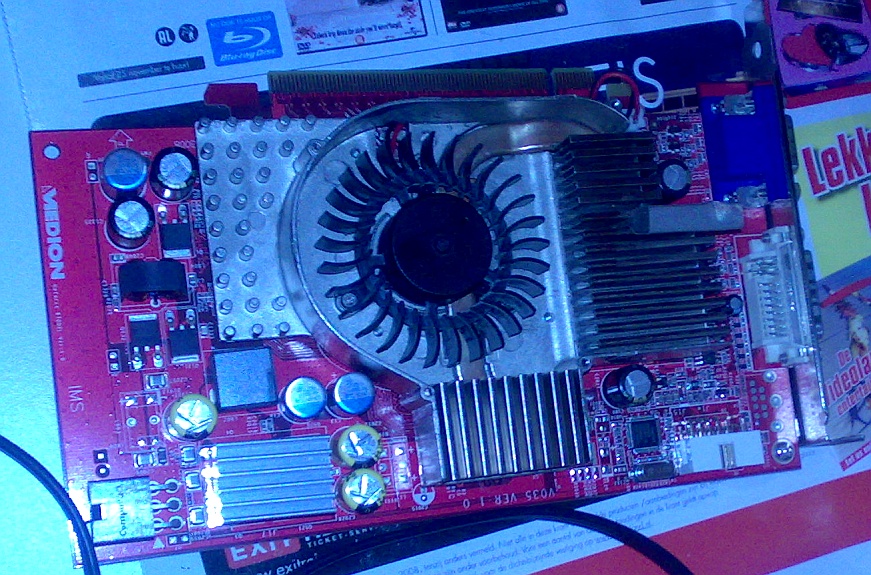
Anyway to be sure I replaced it with another card, which I ripped from
the server machine for testing, and that appeared to solve the problem.
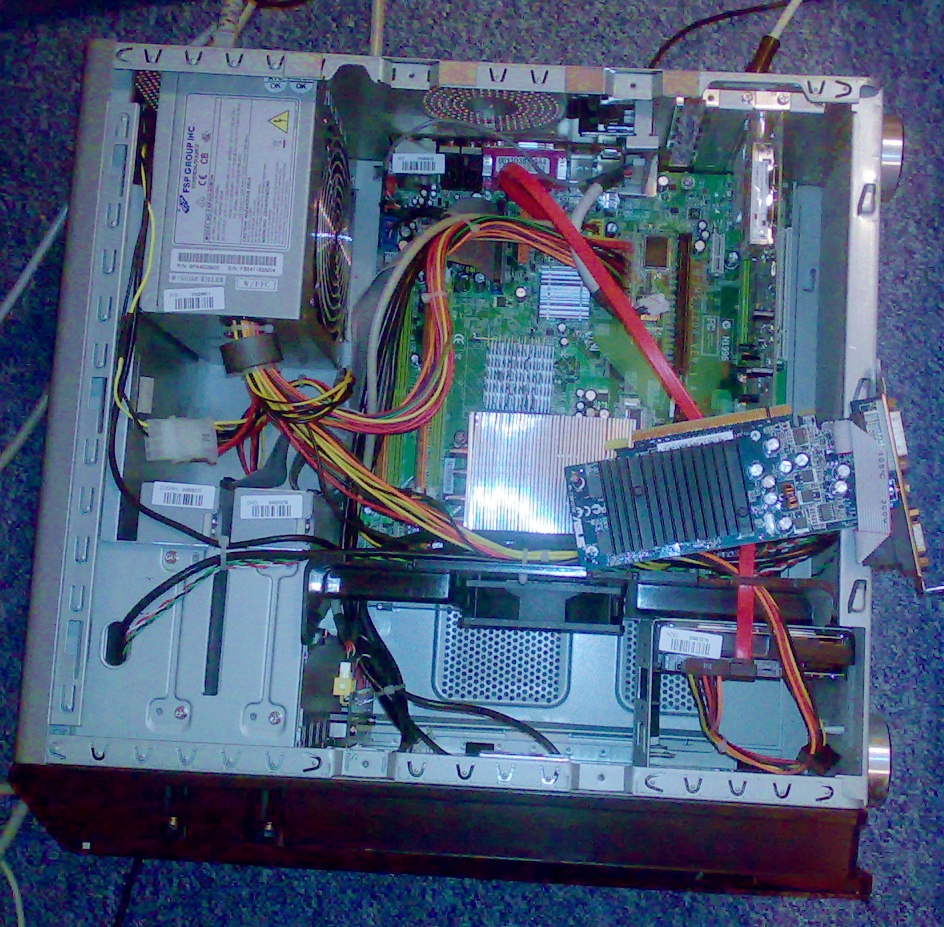
So after some searching and discussion I got a new one, for way under
E100, with Cuda!
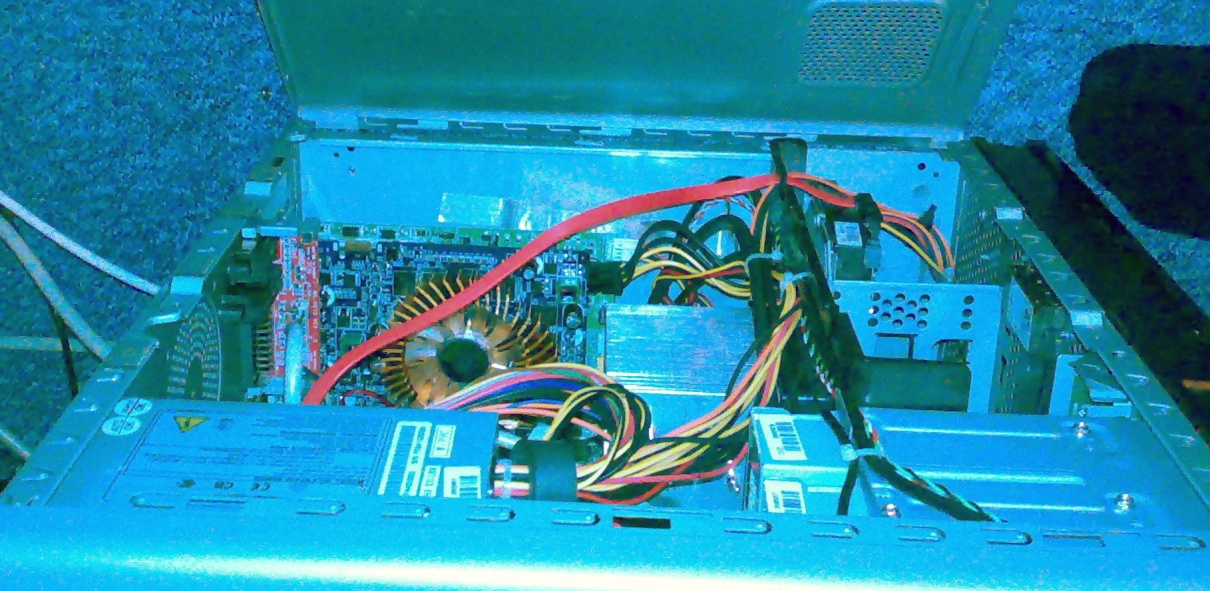
The Audi questions
When I bought an Audi in ´91 it had to be a model 100, 5
cylinder, galvanized (to totally not corrode), at least 100HP (easily),
and at the time it had to be in a bit of a condition, i.e. look ok, and
be not in some way messed up. In fact it had some additional things
like a nice interior and natural gas installation. I knew it had at the
time the new model was introduced the worlds lowest drag factor (0.30),
and I knew a simular model was succesfull in ralleys, which I found
interesting, and proved likely when I took it to a slip-course once. I
think the Audis interested me since I drove some distance in a 80 model
on some job trip at the time: the combination of sportiveness and
comfort are of course known.
I saw some audi flyers lately which contained a lot of that sort of
information:
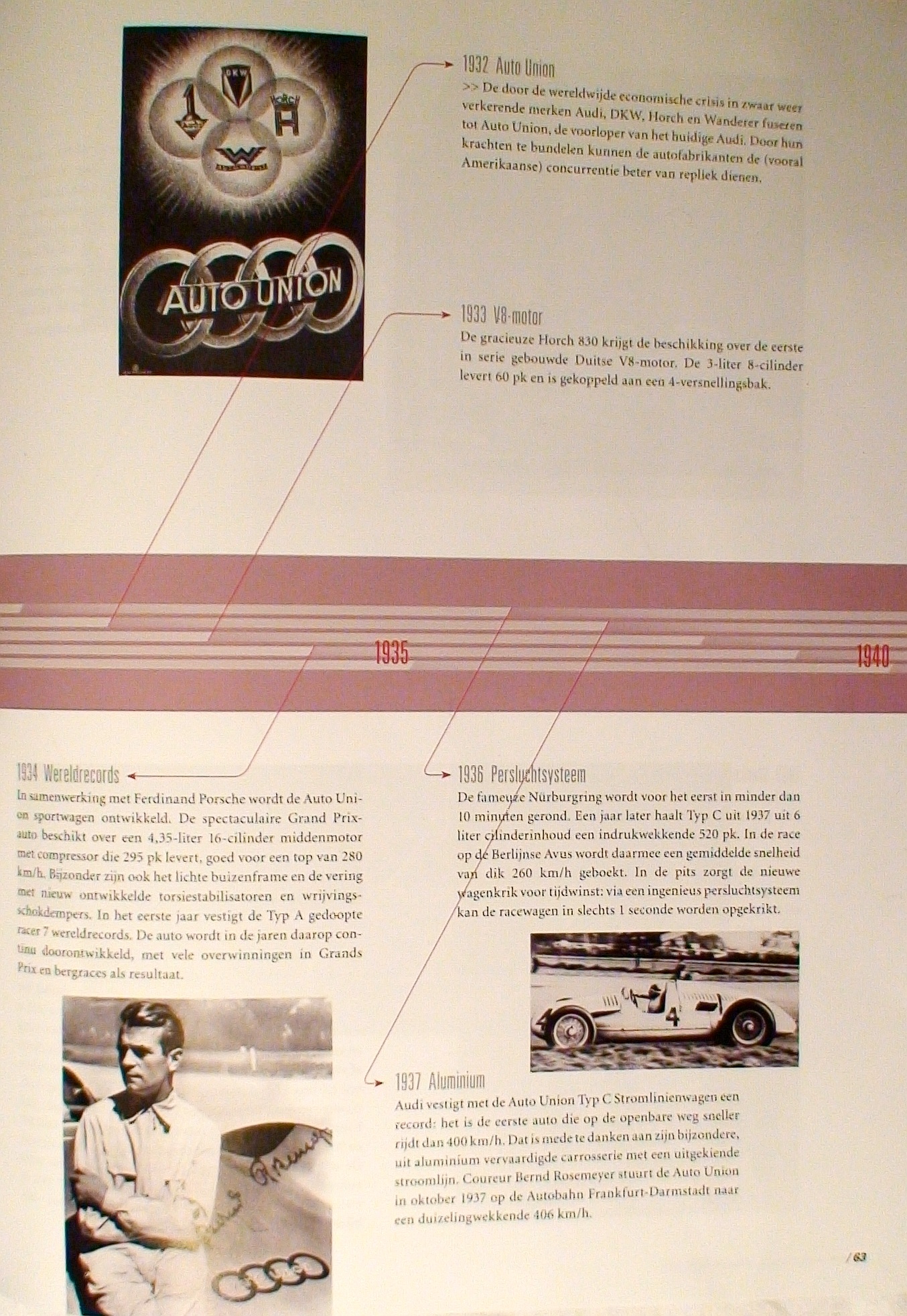
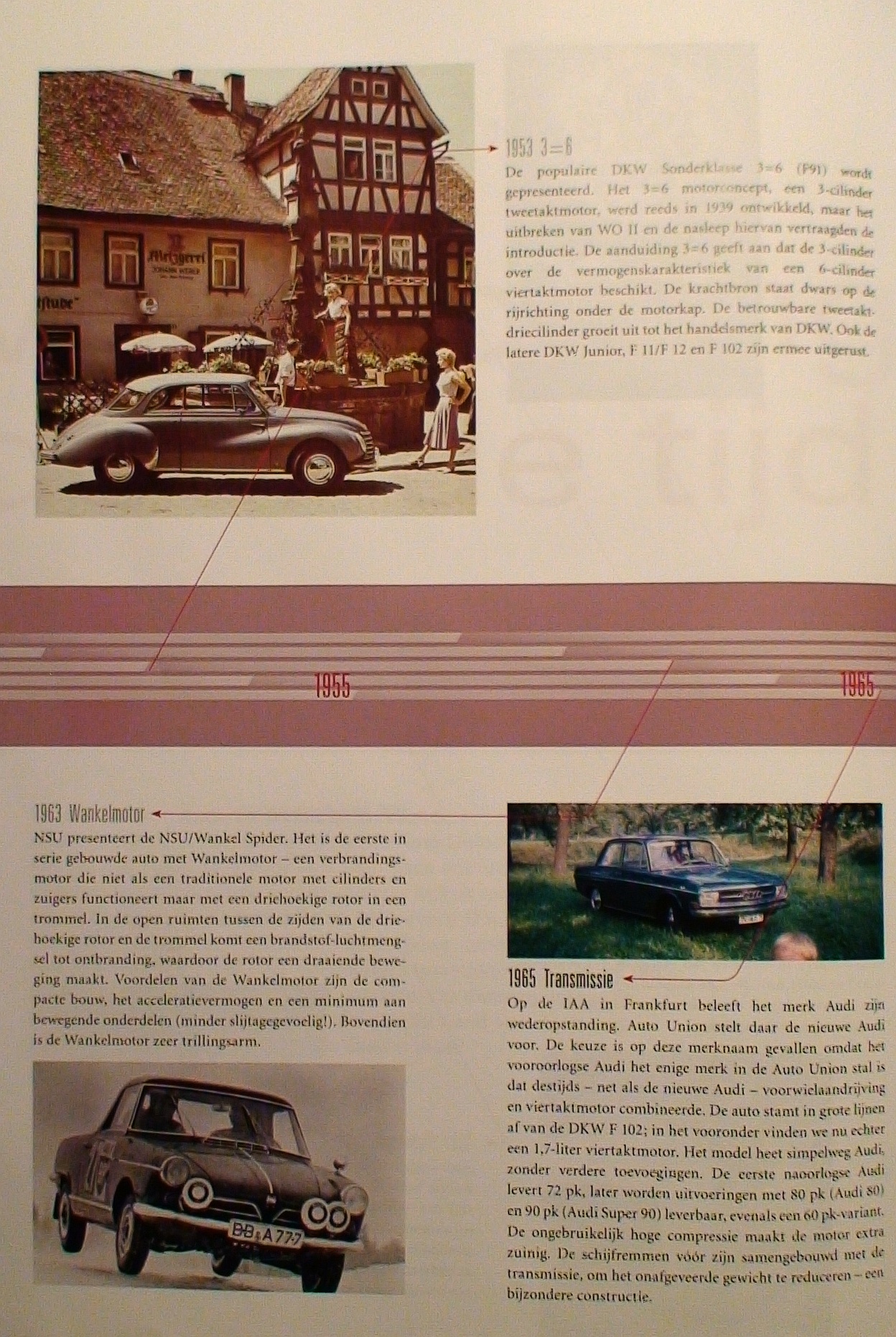
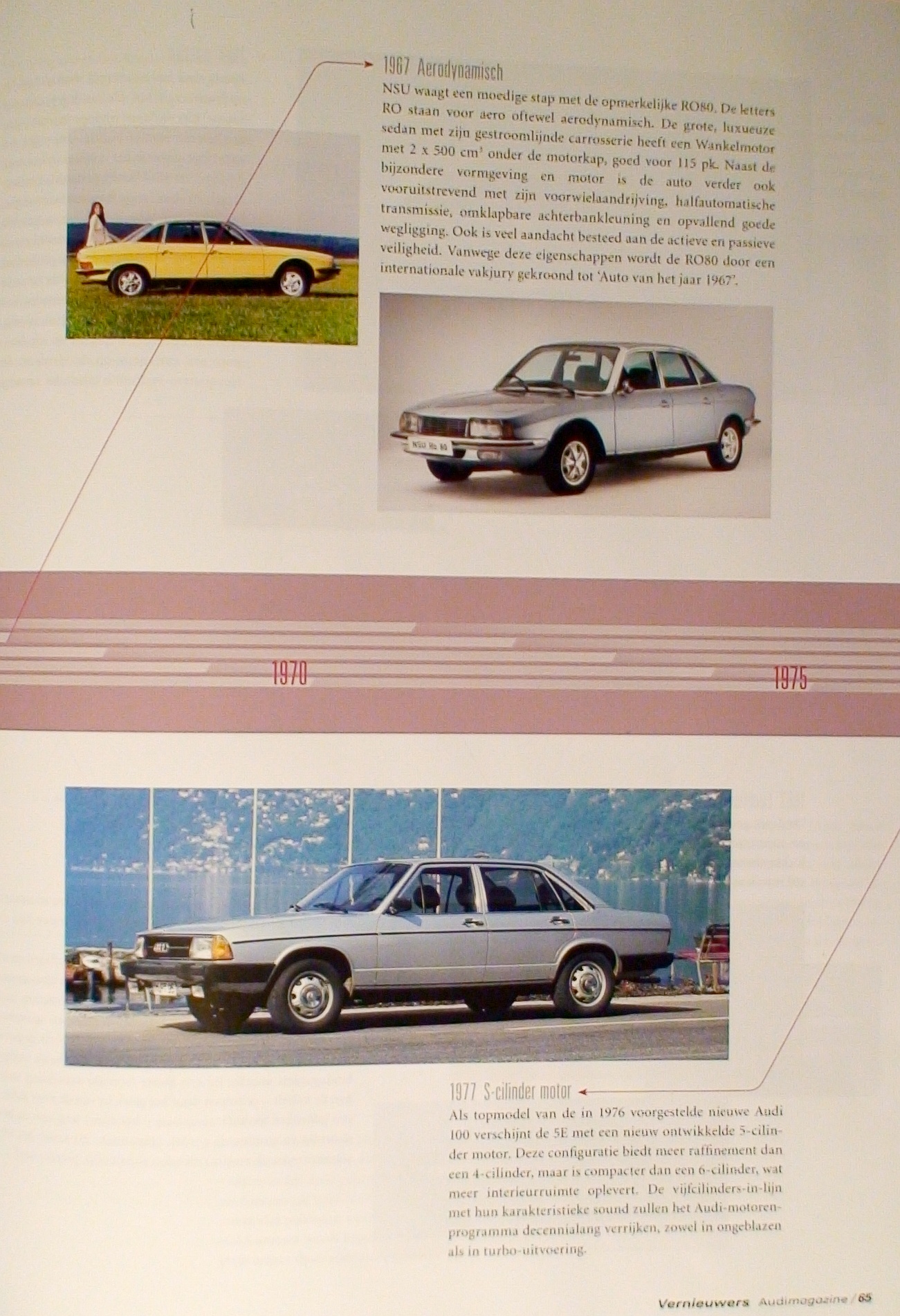
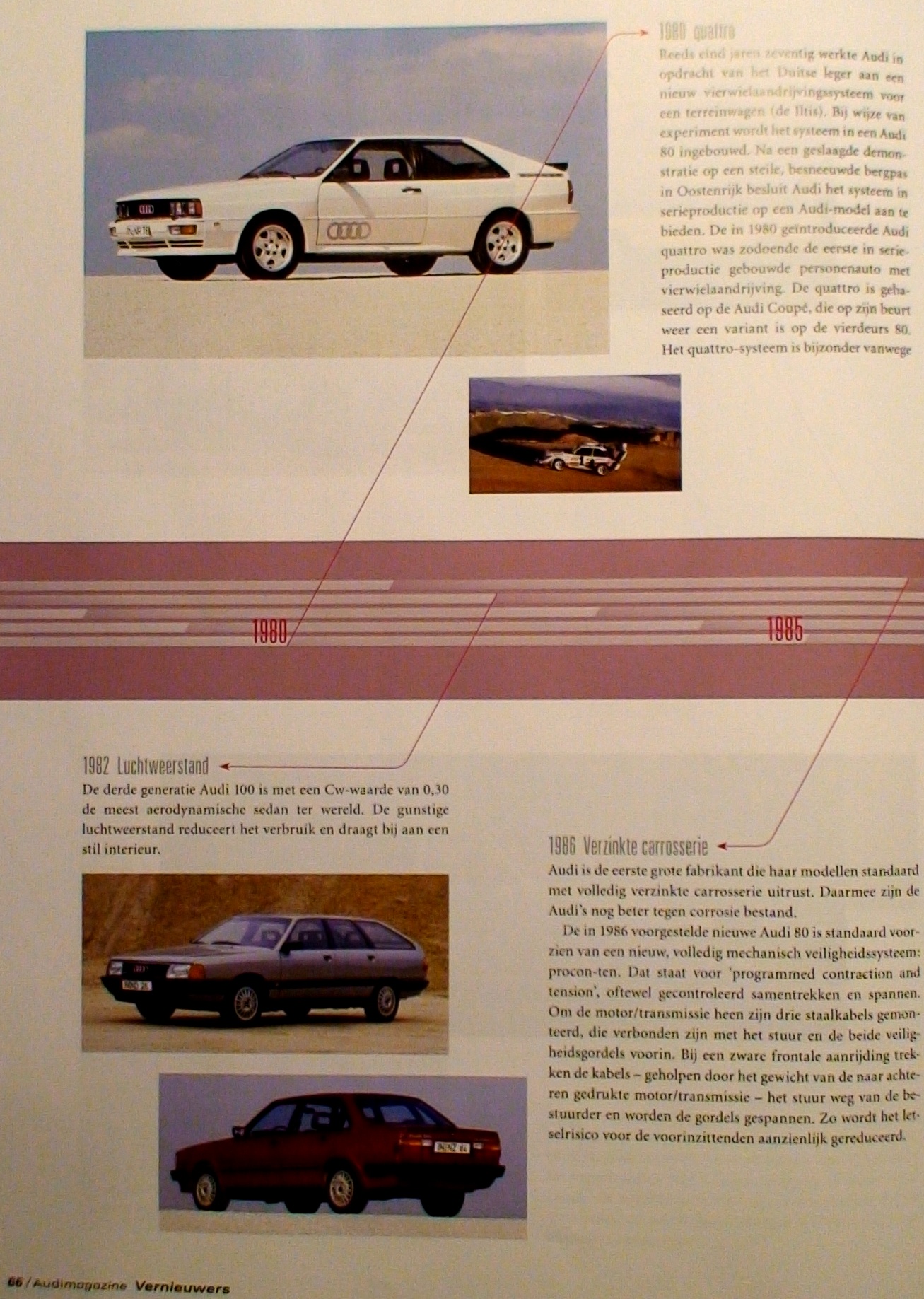
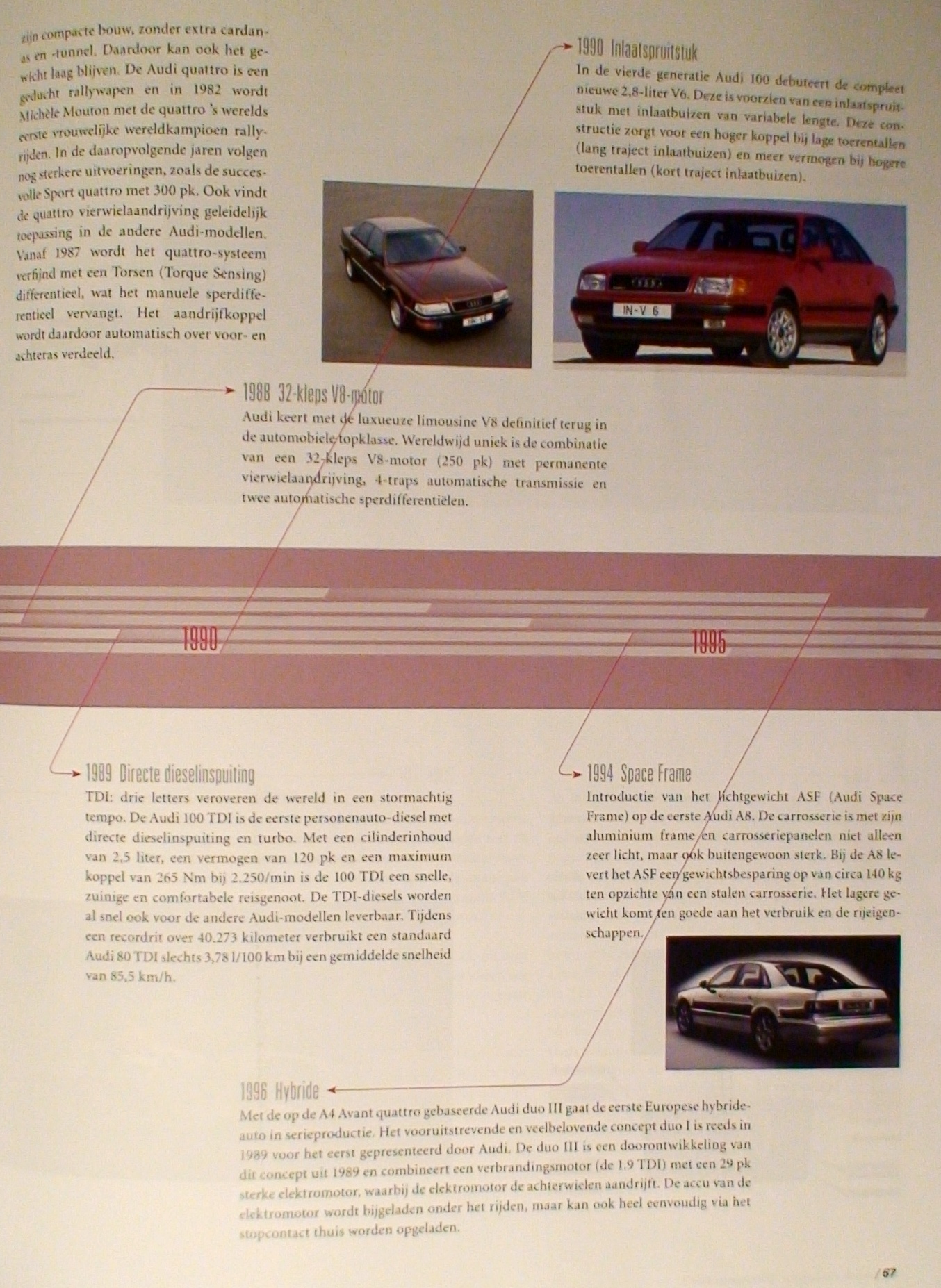
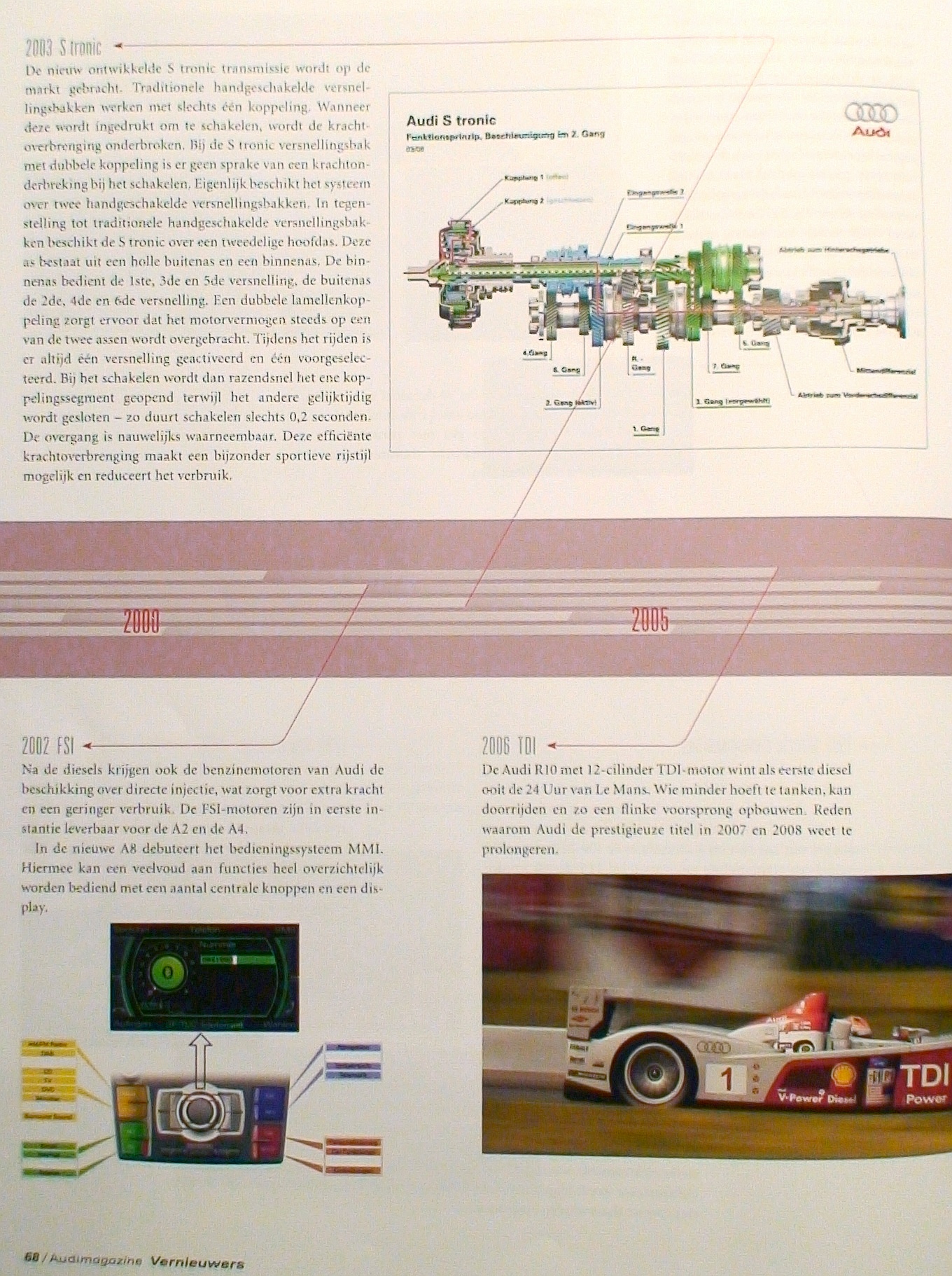
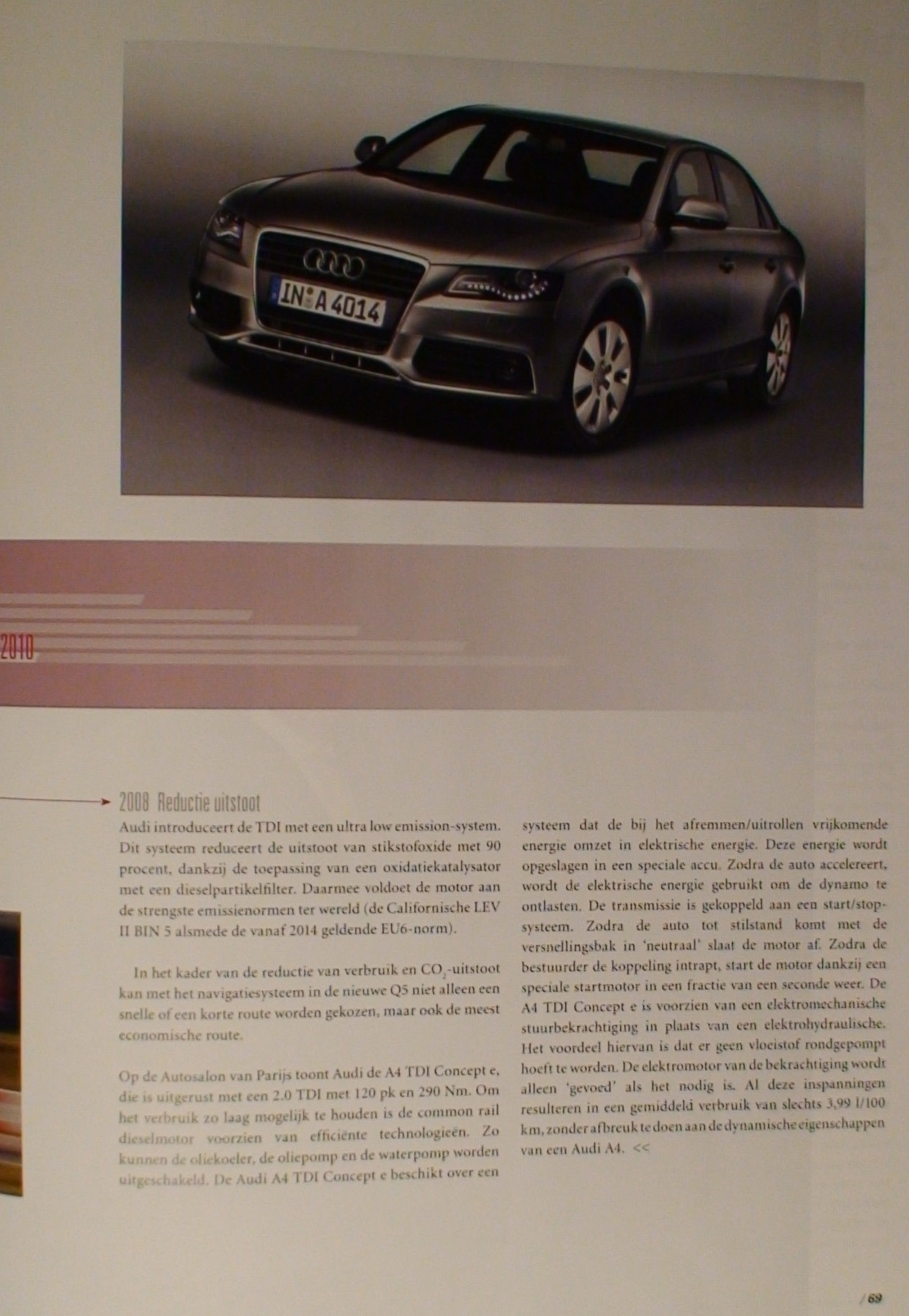
More Of the good stuff: blu-rays
The Nasa bluray is a weird case, it has 295 (!) minutes on one disc,
which is encoded somewhere between 15 and 20 Megabit/Sec from the looks
of it. It isn´t all great film quality, but as it works at least
grainy film is film as
opposed to pixels and bad motion algorithms, and the bluray´s
1080 doesn´t interfere much with the film character (as would be
the case on dvd) so still even those fragments are quite nice, and the
whole looks still very impressive on the beamer. It´s great to
sit like 3 meters away from a 2 meter 30 cm wide screen showing the
stuff in intense enough 1500 Lumens (max) and blazing fast DLP with all
kinds of optimisations set right.
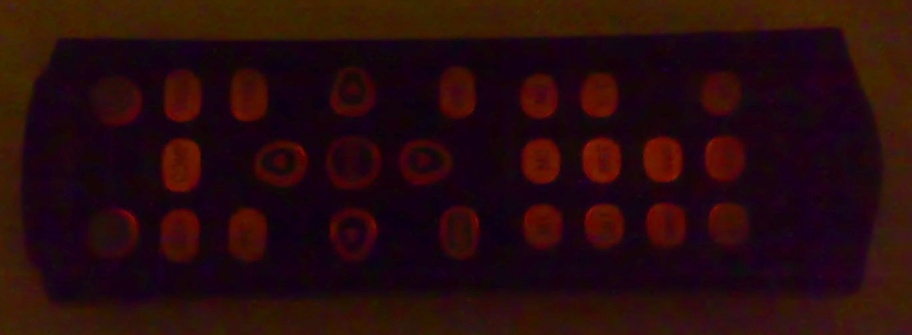
Illuminated remotes

So that is like being a cinema operator, but it took quite some work to
get there, mind you. First of all the beamer needs to be good, although
the HD1000 (Mitsubishi) is a year and a half old now (I seem to
remember) it has been only replaced by a simular model, or maybe
it´s still being made even. And there´s not much really
like it, which has to do also with the required accuray (colours, the
driver processing, in this case the TI DLP chips).
These are my latest views at the moment:
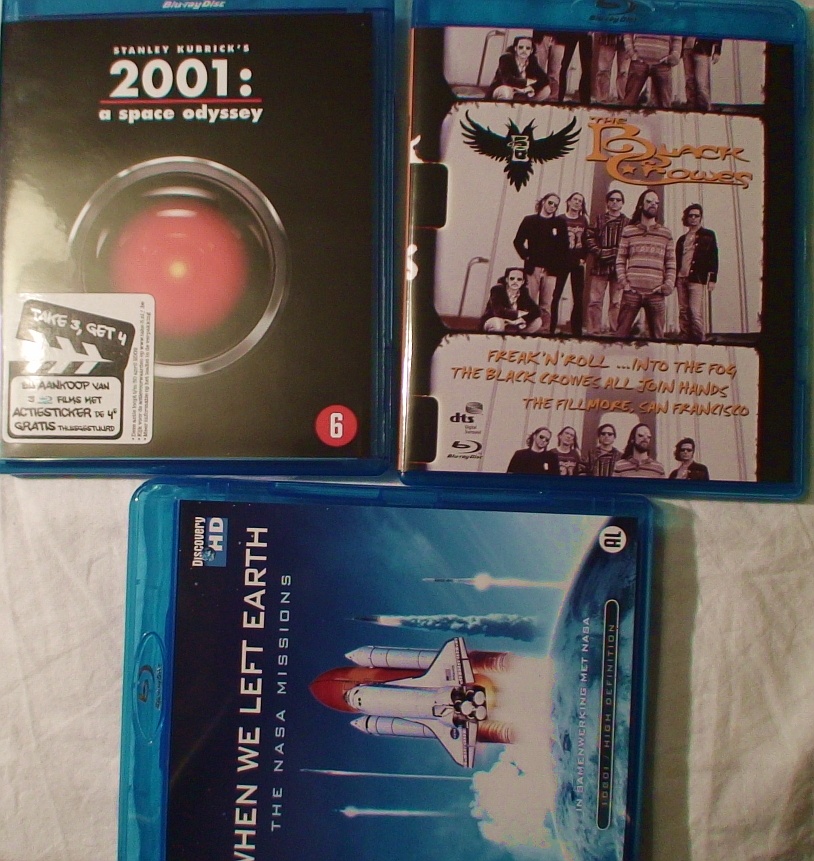
A screen picture (unprocessed, this is what it looks like on the 106
inch pro grade screen), clearly from the NASA bluray:
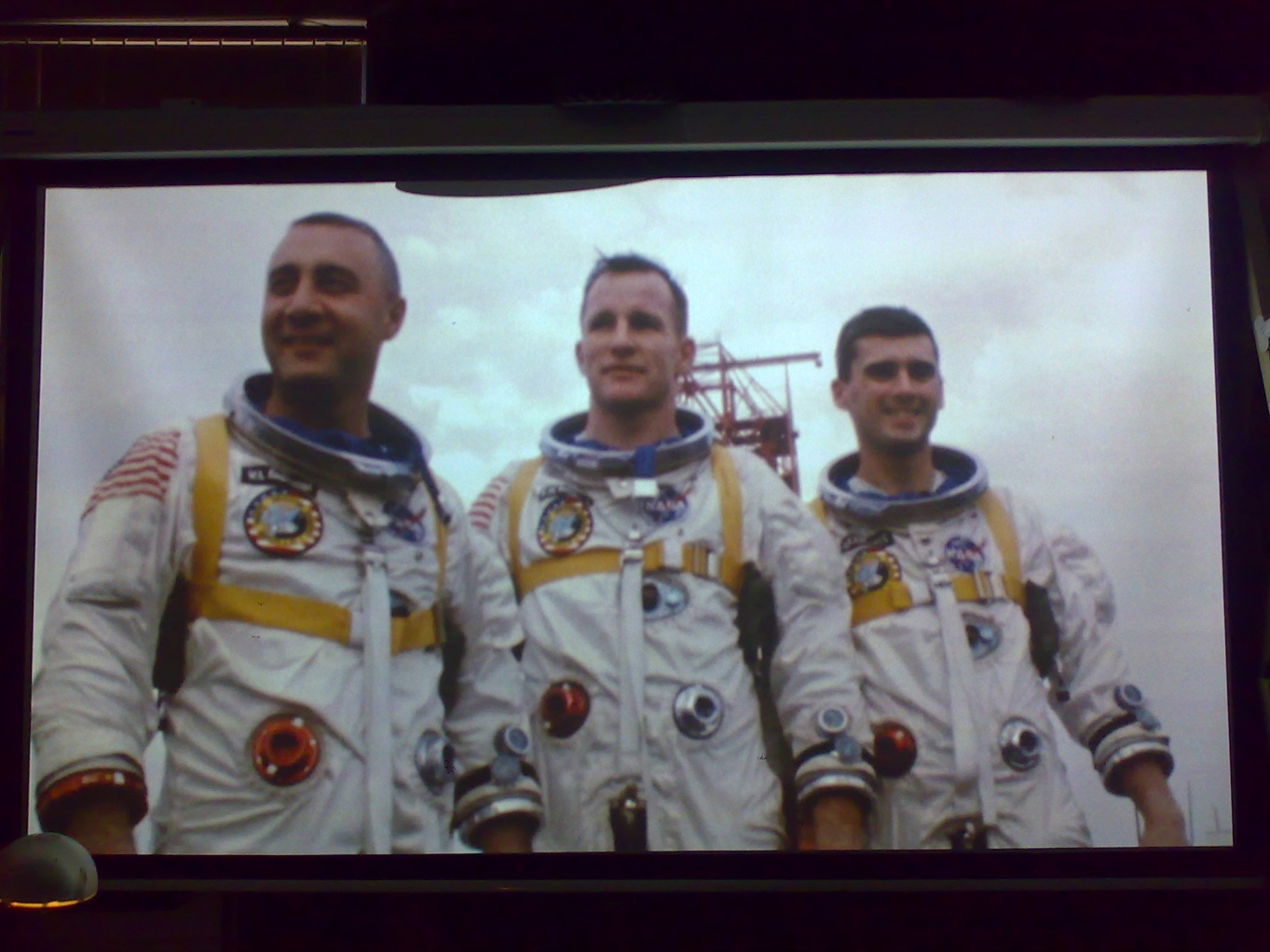
295 minutes of certainly not all very good HD quality but great
material on one disc!
Reflecting surround
After of course listening to all the blurays I can acces/rented with
interest, I tried out a indirect rear (side) sound because I
wasn´t totally satisfied, even though a great sound is almost
instantaneously there with every disc on my big audio system and very
good back (side) powered biamped speakers.
In total there are 5 high quality, high power stereo amplifiers working
when the whole system is on, ranging from 2x40 Watt (appoximate short
term continuous sine RMS
power) to 2x120 (maybe 150 I didn´t measure) Watts, and one
bridged amplifier up to at least a few hundreds (maybe 400...) sine RMS
watts. In total well over half a kilowatt, sine RMS cont. power.
The total supply power is over a continuous kilowatt rated by the toroid transformers
manufacturers, which of course is a lot of power, not to mention the
possible peak music power.
Lets not try that out, shall we. Good.
To put all this power into airwaves there are 13 speakers doing the job they do in
the right frequency band, in the whole system active takeover filters
are at work based on the worlds best quality audio opamps and high
quality (neutral) filter parts, which are analog 2d order filter mostly
(not all) not digital so they
impart no unwanted delay or re-sampling noise and aliasing problems.
The speakers are woofer and tweeter in the powered rear (side)
speakers, and a 4 way system + a 15 inch subwoofer (on the left bottom
in the below picture) as main (front L/R) system. The four way system
has a 12 inch woofer of about a hundred watts, two mid frequency
speakers of varying size, of which the highest frequency reproducing
unit is made to act phaselinear with the fairly powerfull dome tweeter.
All speakers are airtight, non-bass
reflex, to create no ever-present backward reflected waves or
other unwanted oscillations.
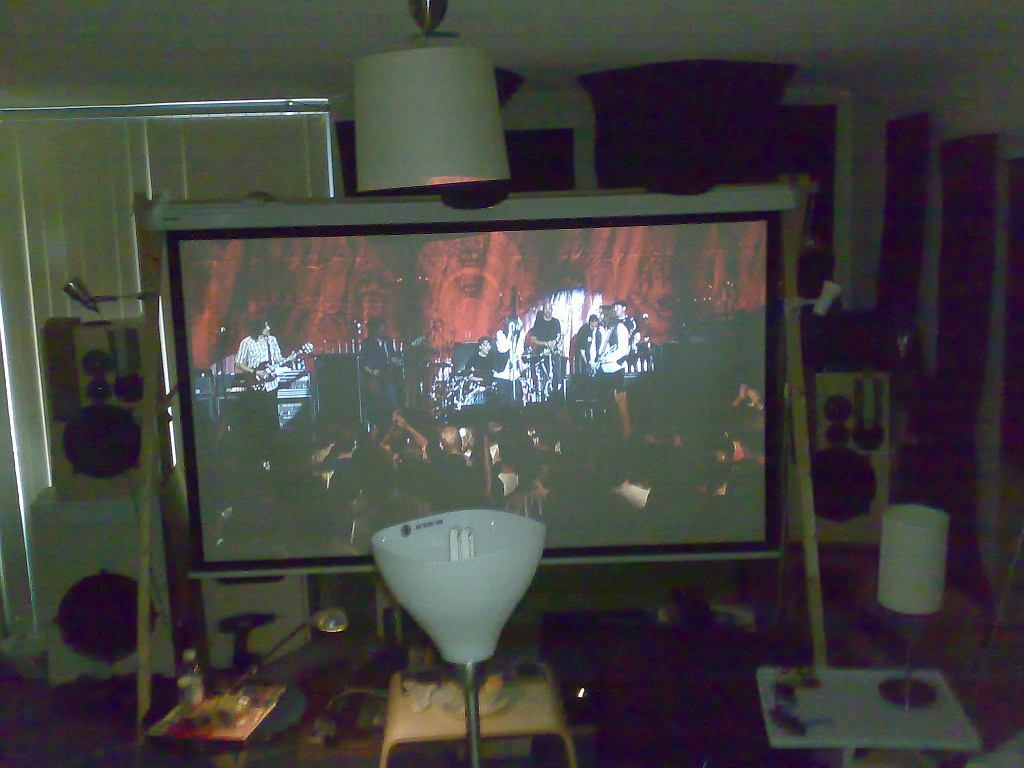
As can be seen from the pictures, the walls and the floor (2 layers)
are acoustically damped for a large percentage with slidable panels. In
essence a studio type setup, with limited room reflections (not
acaustically dead).
As described on one of the previous reporting pages, the system as
quadro system (I can make a good quality rear and side, and I´ve
even made a well funtioning mid front channel, but I have no 7.1
blurays, and the mid front has to compete with an extremely well
sounding 4 ways main system mix, and is therefore except for a better
directionality outside the sweetline not so desirable) functions great,
especially after setting up all parameters and volumes correctly.
However since I am a quality freak maybe, or at least I like to test
how good things can get, I connected the Lexicon (a famous studio
equipment brand already inventing practically and well working DSP in
the 70s) 24 bit converter I have to the TOS output of the bluyray
player to try out wether that would be better still, and indeed: the
Lexicon in general does it again: betting definition, straighter low
(it seemed) and it sounded more neutral and less sampling issued,
somehow. That´s a bit of a trick, because the best audio tracks
normally would be the DTS (master) tracks, and to work with the lexicon
they have to be converted in the player to a 24 bit 96kHz digital audio
signal, which isn´t without losses and possible issues. But it
appears to work great in practice, and then I get to keep the rear
and/or side signals from the excellent enough player outputs, after the
DTS conversion. There are delay issues, of course, the distances in the
player of the front with respect to the rear probably must be more
offset than normal placement of the speakers would make practical. I
tried putting the speakers close to the side of the listening position,
which is different than the quadro setup, and closer to the side setup,
for which the side signal is actually intended, and which indeed sounds
probably as such.
That made the distance as short as possible, and so with the front
needed timing compensation also unpractical. So I though about Bose(TM)
in the 70s: reflecting sound! And so I turned the side speakers and
made them blast against a hard, plastered wall and prepared a first
reflected path by sliding the damping aside, so that the primary path
to the listening would be longer, and that works great!
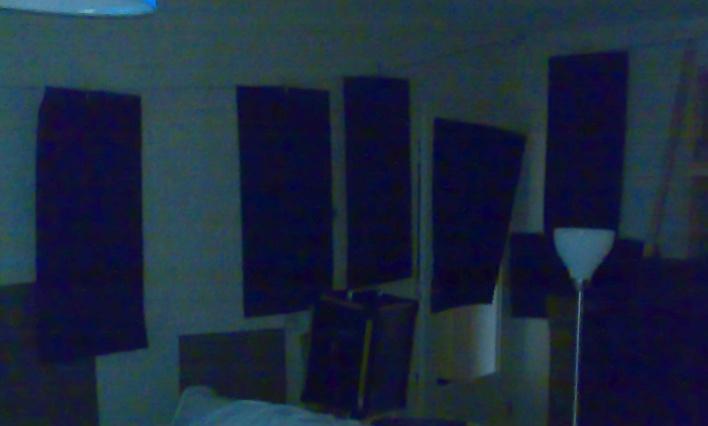
back to the listener:
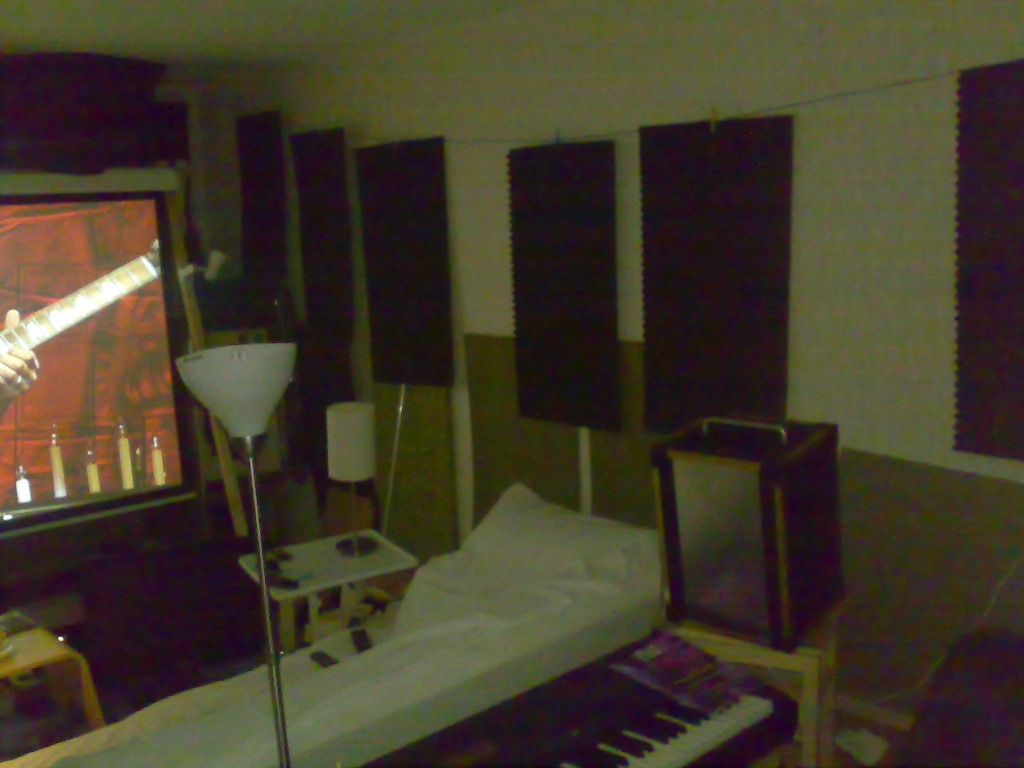
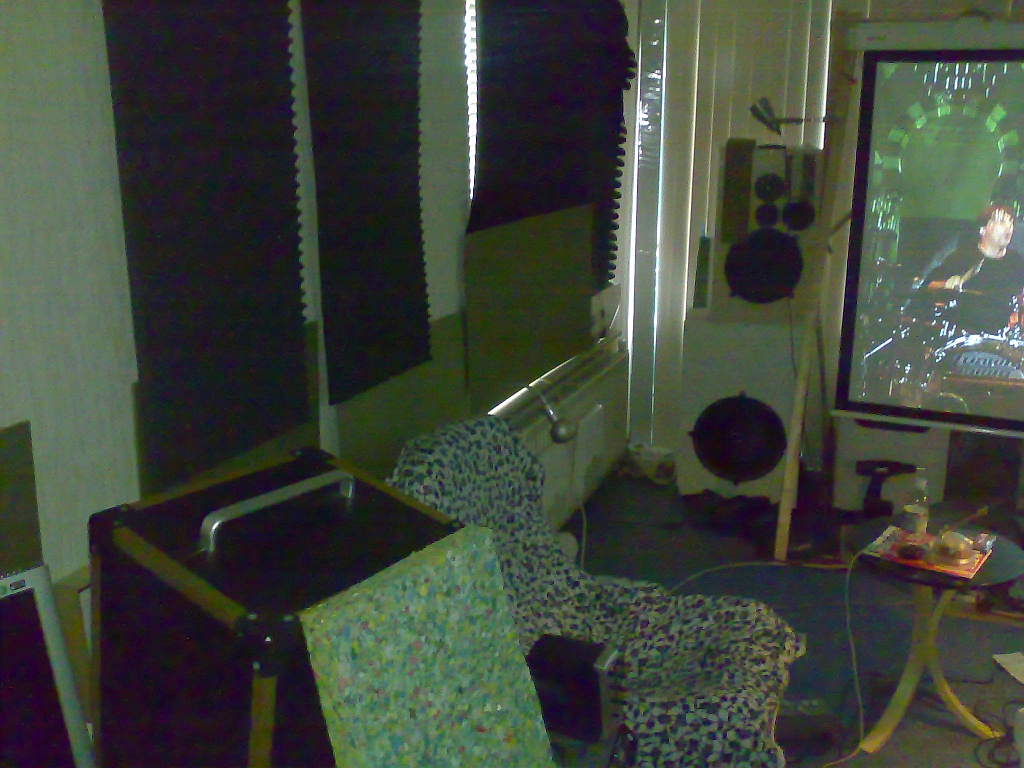
idem
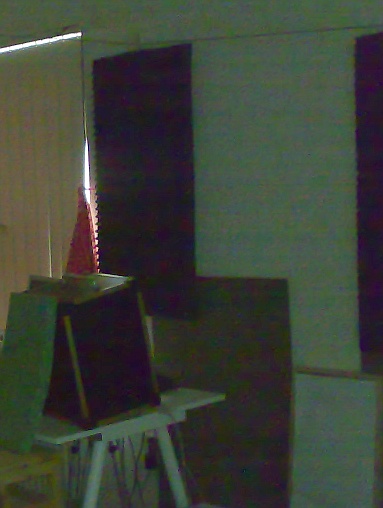
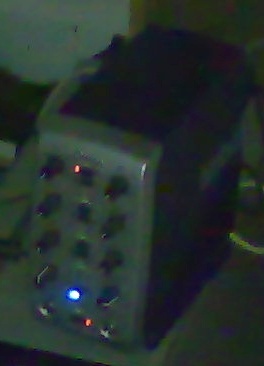
The tos connected 24 bit Lexicon converter
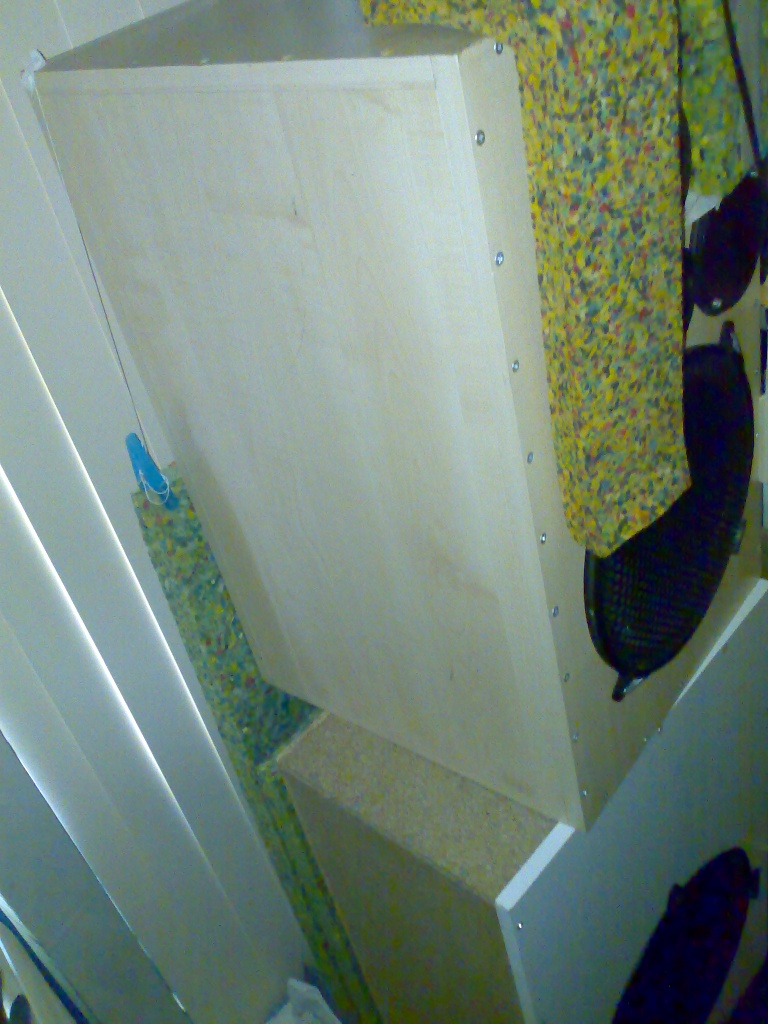
Keeping the neigbours from experiencing excessive bass, and of course
stopping annoying and unprofessional standing waves to an extend:
double layers of damping material behind the 15 inch sub unit (> 100
Liters enclosure).
Without exageration I could now with the indirect sound create concert
and cinema illusion at sufficient volume. To prevent direct frequencies
coming from the side speakers anyhow I set them to ´small´
in the player menu, so low frequencies (which travel around the corner
and ignore the different direction of the speakers and would be in
counterphase, too) are filtered out, and the result is really pretty
good.
I tried listening to the Black Crowes in the Fillmore in SF at some
volume, and later to the Nasa missions disc and I could actually sit
anywhere in the room and follow the films with great sound impression
all over the room, of course the most realistic at the sweet spot, but
the diffused back makes that a sweet line, and really, the sound is
better than in certain cinemas I think!





























